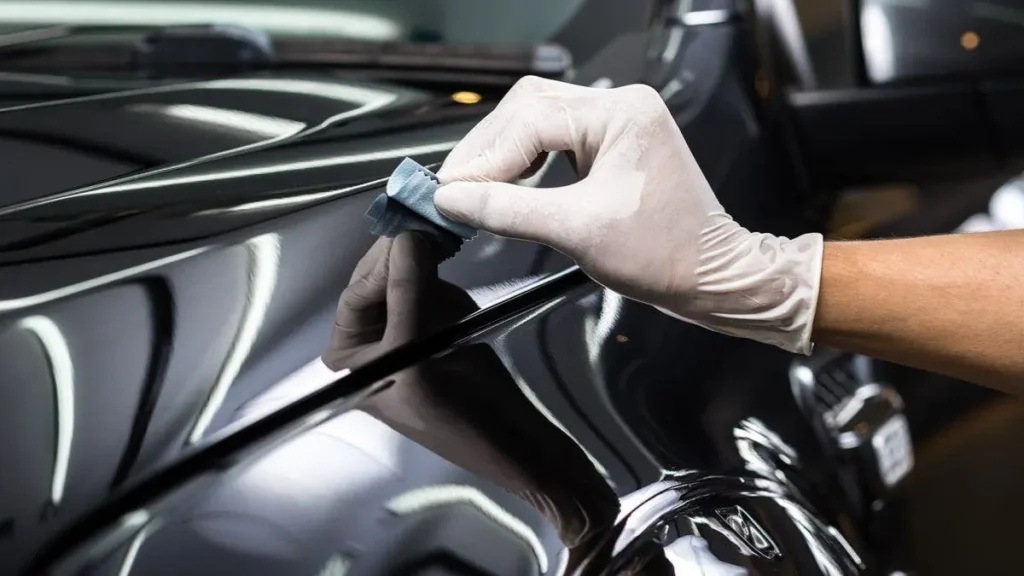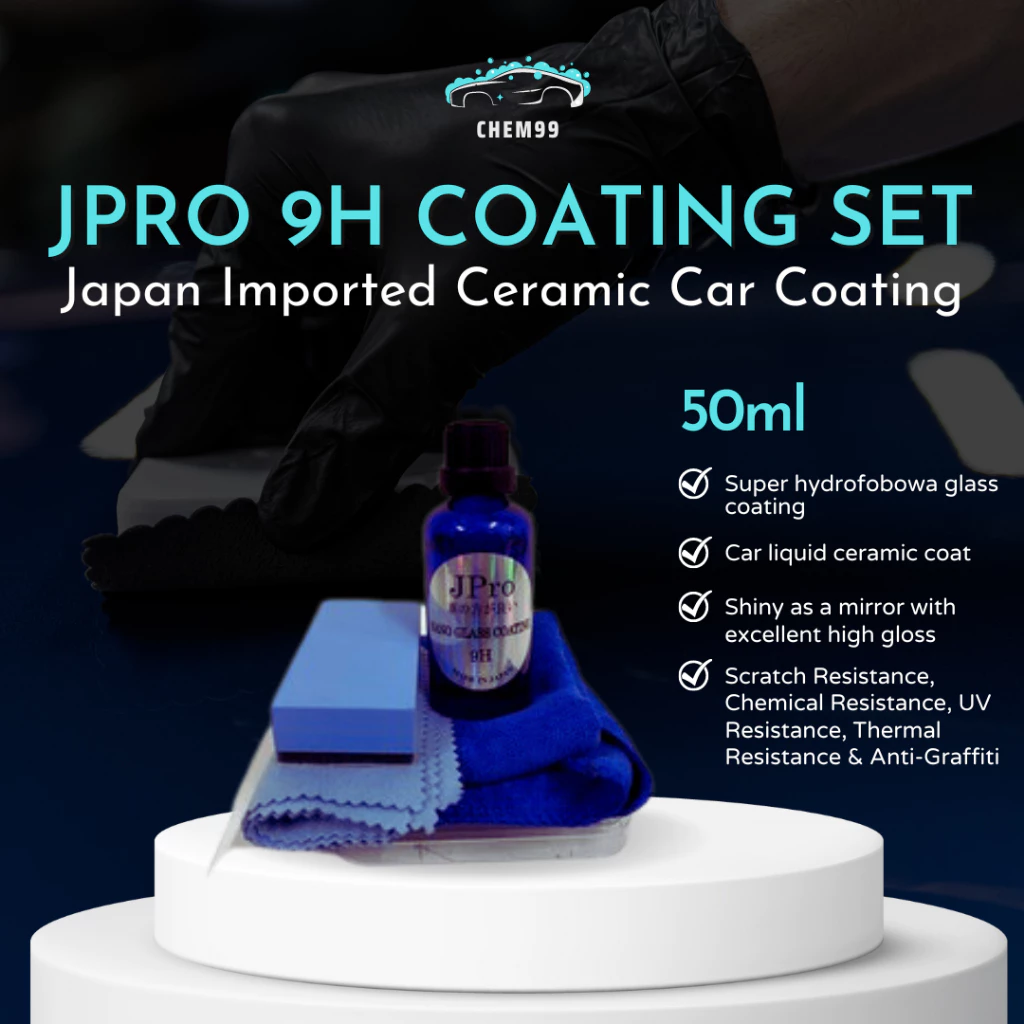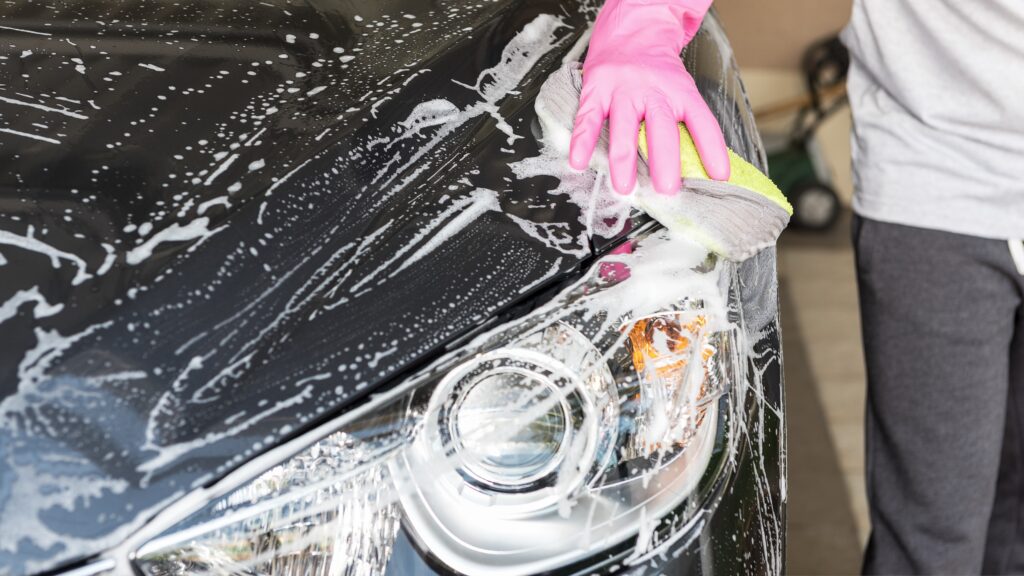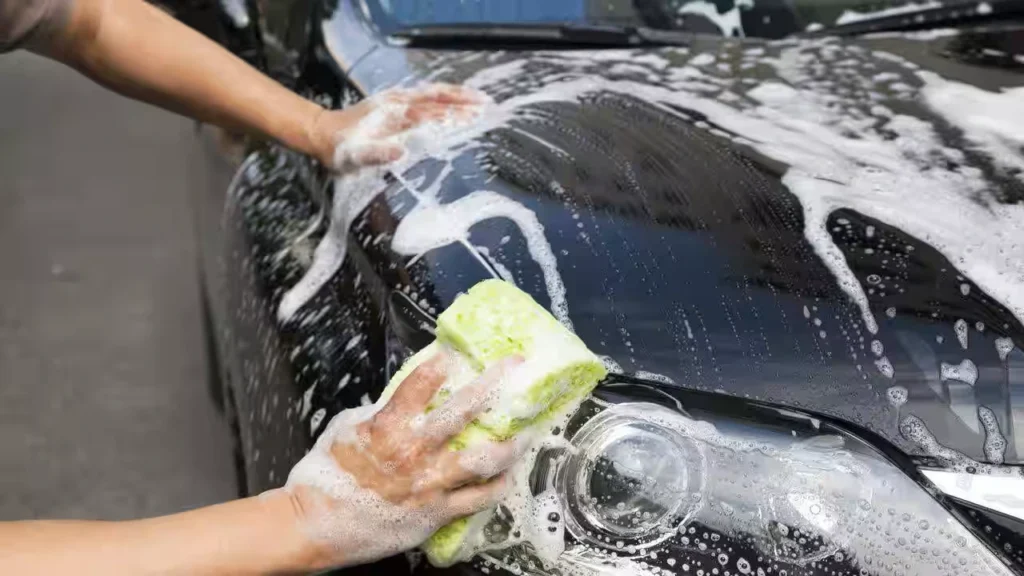Applying ceramic coating to your car yourself in Malaysia is a practical way to protect your vehicle against weather and dirt. DIY ceramic coating offers an affordable and effective solution to keep your car looking new for longer, even in Malaysia’s unpredictable climate. It creates a strong, hydrophobic layer that repels water, dirt, and minor scratches, reducing the need for frequent washing and maintenance.
We can choose from several ceramic coating products designed for easy application at home. These coatings combine paint protection with a glossy finish, improving the vehicle’s appearance while offering resistance against UV rays and chemicals. With the right preparation and tools, applying ceramic coating yourself is manageable and rewarding.
By knowing the basics of ceramic coating and being aware of common pitfalls, we can achieve professional-like results. Understanding how to maintain the coating after application is just as important to ensure the protection lasts for years under Malaysia’s harsh conditions.
- What Is Car Ceramic Coating?
- Benefits of DIY Ceramic Coating in Malaysia
- Choosing the Right Ceramic Coating for Malaysian Vehicles
- Essential Tools and Materials for DIY Application
- Step-by-Step Guide to DIY Car Ceramic Coating
- Common Mistakes and How to Avoid Them
- Long-Term Care and Maintenance in Malaysia
What Is Car Ceramic Coating?
Car ceramic coating is a liquid polymer applied to a vehicle’s paint to form a protective layer. This coating creates a strong bond with the paint, making the surface more resistant to damage and easier to clean. The coating also enhances the car’s shine and protects it from environmental factors.
We will look closely at what makes ceramic coatings special and the different types available for DIY application.
Key Characteristics
Ceramic coatings bond chemically with the car’s clear paint layer. This bond forms a hard, durable shield against dirt, water, UV rays, and minor scratches. The coating repels water and contaminants, which helps keep the car cleaner for longer.
The surface becomes glossier and smoother, making it easier to wash and maintain. Some ceramic coatings also have scratch-filling properties, reducing the visibility of small marks.
The strength and durability vary, with some products lasting from six months to several years. Proper preparation and application are essential to get the best results.
Types of Ceramic Coatings
There are several types of ceramic coatings suitable for DIY use in Malaysia. The main types differ by durability, ease of use, and chemical composition.
- Lite Coatings: Shorter-lasting, usually 6 to 12 months. These are easier for beginners and can be applied with minimal tools.
- Standard Coatings: Offer protection of 1 to 3 years. They require more careful surface prep and multiple layers for full effect.
- Professional-Grade Coatings: Last 3 years or more and provide the highest level of protection. These usually need expert application but some DIY kits mimic this level.
Choosing the right type depends on your skills, budget, and how long you want the protection to last.
Benefits of DIY Ceramic Coating in Malaysia
Applying ceramic coating ourselves saves money and gives us control over how our car looks and is protected. It helps keep our vehicle safe from harsh weather and improves the shine of the paint. The process, if done correctly, offers lasting benefits without the need for professional help.
Protection from Malaysian Weather
Malaysia’s weather is hot, humid, and often unpredictable with heavy rains. DIY ceramic coating creates a strong layer that shields our car’s paint from UV rays. This reduces fading and keeps the paint colour vibrant longer.
The coating also resists water, making rain roll off easily. This hydrophobic effect prevents water spots and reduces dirt build-up, which can be a problem in rainy seasons.
Another benefit is resistance to minor scratches and chemicals found in pollution or bird droppings. This protection slows wear and keeps our car looking better despite daily challenges from the environment.
Enhanced Gloss and Shine
Ceramic coating adds a deep, glossy finish that enhances the car’s original paint. This glossy look comes from the smooth, glass-like layer the coating forms on the surface.
With DIY application, we can control how thick and even the coating is, ensuring the best shine possible. This shine doesn’t fade quickly and makes the car stand out on the road.
The coating also helps repel dirt and grime, so the car stays cleaner for longer, meaning less frequent washing with simple maintenance. This makes caring for the car easier and keeps the gloss lasting for months.
Choosing the Right Ceramic Coating for Malaysian Vehicles
Selecting a ceramic coating means looking at quality, durability, and how well it suits our local environment. We must also consider products that guarantee safety and proper certification to protect our vehicles without risk.
Top Brands and Products
In Malaysia, some brands stand out for their strong reputation and product reliability. Brands like Meguiar’s and Turtle Wax offer different packages that vary in layers and protection levels.
We should look for coatings that provide long-lasting shine and strong resistance to scratches and dirt. Some DIY kits balance ease of use with professional-quality results, ideal for beginners and experts alike.
Prices can vary widely, so comparing products based on service warranties and user reviews helps us pick the best fit for our needs and budget.
Local Conditions Consideration
Malaysia’s hot, humid climate and frequent rain pose challenges for any car coating. We want products with strong UV protection to prevent paint fading.
Water repellence is crucial due to heavy rain and high humidity, which ceramic coatings typically provide through hydrophobic properties. This helps keep the car clean and reduces water stains.
We must also consider pollution and salt exposure near coastal areas. A good ceramic coating should form a tough barrier against these elements to avoid paint damage over time.
Safety and Certification
Safety matters when applying any chemical product to our cars. We should use ceramic coatings that are certified by recognised bodies to ensure they are non-toxic and environmentally safe.
Looking for coatings with clear material safety data sheets (MSDS) helps us understand possible risks and how to handle them properly.
We recommend following all manufacturer instructions carefully to avoid harm to both the person applying the coating and the car’s paintwork. Proper preparation and application environments also improve safety and effectiveness.
Essential Tools and Materials for DIY Application
Getting a good result requires having the right tools and products. We need specific kits for applying the coating, items to prepare the car’s surface properly, and protective gear to keep ourselves safe during the work.
Application Kits
We start with the ceramic coating kit itself. This usually includes the ceramic coating liquid, an applicator pad, and microfiber towels. The coating contains ingredients like polysiloxane, which create a hard, shiny layer on the paint.
The applicator pad helps spread the coating evenly. Microfiber towels are essential to buff the surface without scratching it. Some kits also offer different sizes of towels or special applicator foam to improve precision.
When choosing a kit, check the coating’s hardness level (typically around 9H) and how long it lasts—good kits protect your car for 3 to 5 years. This ensures the effort is worthwhile and durable. Our preferred option is the JPRO 9H Coating Set.
Surface Preparation Products
Before applying the coating, the car surface must be clean and smooth. We need car shampoo that is pH balanced to avoid damaging the paint. A bucket and water source are essential for washing. Check out our Ultimate Guide on Washing Your Car for recommendations on a pH balanced car shampoo.
A clay bar kit is used next. This removes tiny particles stuck on the paint that washing alone can’t clear. It helps create a smooth finish for better coating adhesion. Our favourite and a cost-effective option is this one from CP Car Detailer.
Sometimes, using an iron remover is necessary to eliminate brake dust and iron contaminants. If there are scratches or swirl marks, a mild polish or compound can restore the paint’s smoothness for a flawless final look. This one from Soft99 is recommended.
Personal Protective Equipment
Applying ceramic coating involves chemicals that can irritate the skin or eyes. We must wear nitrile gloves to protect our hands from exposure.
Safety glasses or goggles guard our eyes from splashes. Wearing a mask can help avoid breathing in fumes, especially in less ventilated spaces.
Comfortable clothes that cover arms and legs prevent accidental contact with the coating liquid. Taking these precautions keeps the process safe and comfortable.
Step-by-Step Guide to DIY Car Ceramic Coating
To get the best results with ceramic coating, we need to focus on three main areas: cleaning and preparing the surface, applying the coating carefully, and allowing it to cure properly. Each step requires attention to detail and patience.
1. Surface Preparation
The first step is to make sure the car’s paint is perfectly clean. We start by washing the car with a specialised car wash soap to remove dirt and grime. Using a microfiber cloth prevents any scratches during cleaning.
Next, we decontaminate the paint by using a clay bar or a paint cleaner. This removes any bonded contaminants like tar or sap that soap can’t remove. If needed, we also fix minor scratches and swirl marks by polishing the surface.
Finally, we wipe the paint with an isopropyl alcohol (IPA) based panel wipe to remove oils and residues. This step is vital to help the ceramic coating bond strongly to the paint.
2. Application Techniques
Once the surface is ready, we apply the ceramic coating in small sections, about 2×2 feet at a time. Using the applicator pad provided in the kit, we apply the coating with light, even pressure.
We work in straight lines to cover the entire area without missing spots or applying too much product. The coating usually needs to flash or haze within a few minutes. If the product dries too fast or leaves streaks, we use a clean microfiber cloth to gently buff the area.
Avoid applying the coating under direct sunlight or on a hot surface, as this can affect curing and finish. Working in a shaded, cool spot ensures a smooth application and better results.
3. Curing Process and Tips
After applying the coating, we leave the car to cure. Most coatings require about 24 hours of dry time before any water contact. Avoid washing or touching the surface during this period.
Temperature and humidity affect curing. Ideally, we work in temperatures between 15°C and 25°C with low humidity. If it’s too cold or humid, curing slows down, which can affect the coating’s durability.
For best results, we apply a second coat after the first has cured. This strengthens the protection and improves shine. Regular maintenance with gentle washes helps keep the coating effective for longer.
Common Mistakes and How to Avoid Them
When applying ceramic coating, attention to detail is vital. Small errors can ruin the finish or reduce how long the coating lasts. We must focus on proper surface cleaning and applying layers correctly to get the best result.
Improper Cleaning
Before applying ceramic coating, the car’s surface must be perfectly clean. Any dirt, grease, or old wax left on the paint will stop the coating from bonding properly. This leads to patches where the coating fails or peels off.
We recommend washing the car thoroughly with a proper car shampoo, not household detergents. After washing, use a clay bar to remove bonded contaminants. Finally, wipe the surface with an isopropyl alcohol (IPA) solution. This removes oils and residues that are invisible but will stop the coating from adhering.
Skipping or rushing these steps causes uneven shine and shortens the coating’s protection. Take your time to ensure every part of the paint is clean and dry before you start.
Incorrect Layering
Applying too thick or too many layers of ceramic coating can cause streaking, cracking, or peeling. Conversely, applying too thin a layer will limit the coating’s protective abilities.
We suggest applying thin, even layers one at a time. After applying each layer, allow it to cure in a dust-free place for the time specified by the product instructions. Do not rush the process by applying the next layer too soon.
Use a quality applicator cloth or pad to spread the coating evenly. Avoid overworking the surface, which can remove product or create uneven spots. Keeping the environment between 15°C and 25°C helps the coating cure properly and prevents issues caused by temperature extremes.
| Common Errors | How to Avoid Them |
|---|---|
| Dirty surface | Wash, clay bar, and wipe with IPA |
| Thick layers | Apply thin, even layers with curing time |
| Rushing application | Follow product curing times carefully |
| Poor environment | Work in a clean, temperature-controlled space |
Long-Term Care and Maintenance in Malaysia
Proper care is essential to keep the ceramic coating effective and extend its lifespan. We need to focus on how to clean the vehicle and when to check the coating’s condition to maintain its protection against Malaysia’s climate.
Recommended Cleaning Methods
To protect the coating, we should avoid harsh detergents and abrasive materials. Use a pH-neutral car shampoo designed for coated cars. This helps maintain the coating’s durability without breaking it down. We’ve written an in-depth guide on the best car shampoos for ceramic coated cars. Check it out!
Washing should be done with a soft microfiber mitt to prevent scratches. We should rinse the car thoroughly before and after washing to remove loose dirt.
Avoid automatic car washes with brushes because they can damage the coating. Instead, hand washing is the safest method.
Dry the car with a clean, soft microfiber towel to avoid water spots. Regular cleaning, about every two weeks, helps keep the ceramic coating working properly.
Periodic Inspections
Regular checks are important to catch any wear or damage early. We should inspect the car’s surface under good lighting once every few months.
Look for water spots that don’t bead or areas where the gloss fades. These may show that the coating needs attention.
If we notice signs of wear, it’s best to consult a professional for possible reapplication or maintenance.
Keeping a log of wash dates and inspections helps us monitor the coating’s condition and plan future care routines.



